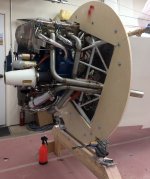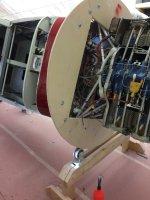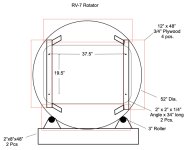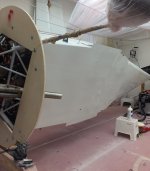PaulvS
Well Known Member
This is about how to spray paint the fuselage and the belly and what painting sequence to follow so as to try and avoid orange peel and dry spots by maintaining a wet edge.
For comparison, if painting a car then the painter might start at the front quarter and spray up and over the hood and down the other quarter. Then move up the pillars and spray the roof from left to right. Next would be the doors on the one side and then the other. Finally the rear would be painted from the one quarter and over the trunk and back to the other rear quarter. This sequence keeps a wet edge open so that fresh paint is sprayed onto an overlap surface that is still wet and helps the overspray to blend in.
The fuselage looks more complicated to paint than a car because of the belly. Some painters put the fuselage on a rotisserie but if that is not feasible (engine is already mounted) then what is the best sequence to spray the belly along with the other fuselage panels? Any insights and tips would be appreciated!
For comparison, if painting a car then the painter might start at the front quarter and spray up and over the hood and down the other quarter. Then move up the pillars and spray the roof from left to right. Next would be the doors on the one side and then the other. Finally the rear would be painted from the one quarter and over the trunk and back to the other rear quarter. This sequence keeps a wet edge open so that fresh paint is sprayed onto an overlap surface that is still wet and helps the overspray to blend in.
The fuselage looks more complicated to paint than a car because of the belly. Some painters put the fuselage on a rotisserie but if that is not feasible (engine is already mounted) then what is the best sequence to spray the belly along with the other fuselage panels? Any insights and tips would be appreciated!





